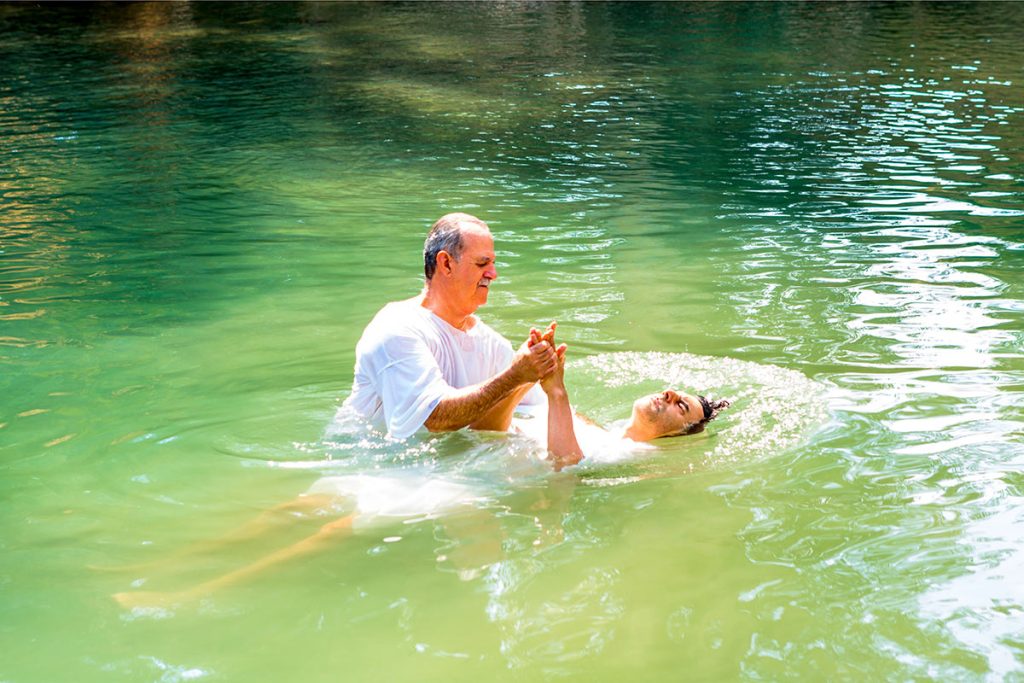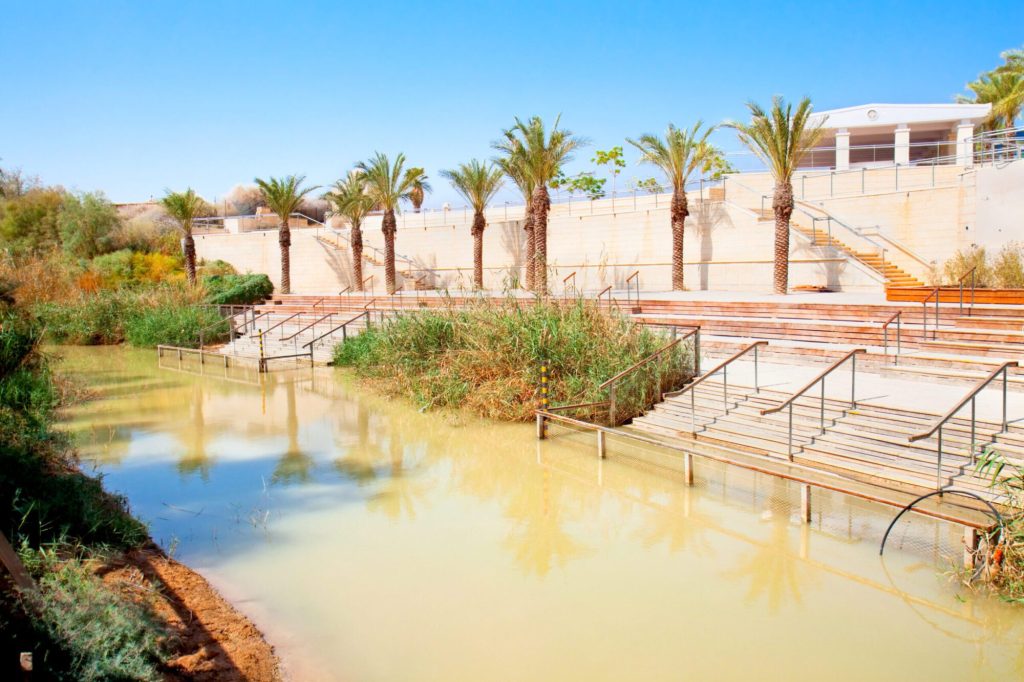Qasr al-Yahud (literally in Hebrew: “Jewish Palace”) is the place where; according to Jewish tradition, the Israelites crossed the Jordan River upon entering the land of Canaan. Furthermore, In Bethany located in front of Qasr al-Yahud; on the east bank of the Jordan River; John the Baptist baptized Jesus and the rest of his followers. Moreover, the baptismal site is considered the third holiest in the Christian world; after the Church of the Nativity in Bethlehem and the Church of the Holy Sepulcher in Jerusalem.
Also, It is common to identify on the site the place where Elijah; in company with Elisha, approaches the Jordan. Furthermore, the Bible narrates that he rolls up his mantle and strikes the water. Then the water immediately divides; and Elijah and Elisha cross on dry land. Finally, a chariot of fire and horses of fire appear, and Elijah is lifted up in a whirlwind. And as Elijah is lifted up to heaven by a chariot; his mantle falls to the ground and Elisha picks it up.
Last, Qasr al-Yehud is located in the southern part of the Jordan River, 10 km east of Jericho and south of the Allenby Bridge. It covers an area of 329 acres belonging to the Greek Orthodox Church.
The History of Qasr al-Yahud
Over the years, monasteries and guest houses were built along the west bank of the Jordan for the use of the pilgrims who came to dip in the place. The multiplicity of monasteries in the area earned it the name “Land of the Monasteries”. The first church established in Qasr al-Yahud, the Church of John the Baptist, was built in the Byzantine period (probably in the late fifth or early sixth century). The foundations of the building used today were built in the 12th century; it was renovated by the Greek Orthodox Church in the 50s of the 20th century. Due to its fortified structure and high location, the church enjoyed relative security, and therefore also served as a guest house for pilgrims.
The Area During the Ottoman period
During the Ottoman period, when the custom of baptism in Jordan was reduced to the Eastern churches and the authorities sponsored baptism ceremonies on the east bank of the river, the monasteries were gradually abandoned. During the British Mandate, tourism to Jericho and the site resumed, and new monasteries were established there. Between the church of John the Baptist and the baptismal site itself, Franciscan chapels were erected; and south of the baptismal site, along the river, other monasteries and churches were built, including a Syrian monastery, a Coptic monastery, a Russian chapel, an Abyssinian monastery (“Deir al-Habash”) and a Romanian church.
The condition of the buildings deteriorated following an earthquake in 1956; and during the Six-Day War, when Israel took control of the monastery area, they were abandoned by their inhabitants. A security fence stretched west of the compound, and mines were laid along with it. The bustling site was emptied of visitors. As an alternative to the place, a Jordanian baptismal site south of the Sea of Galilee was established in 1981. Qasr al-Yahud reopened for the baptism of pilgrims in 2011.
Qasr al-Yahud Today
So in the 1980s, baptismal ceremonies at the site were renewed at the request of the Greek Patriarchate; and in time other Christian denominations renewed the practice. Every year on January 18, the Greek Orthodox Church celebrates the Feast of the Epiphany. Another Greek Orthodox Mass is held in Qasr al-Yahud a few days before Easter. Prior to the Pope’s visit to Israel in 2000, Nature and Parks Authority carried out work in the area; which allowed access to the Jordan River, and more extensive work was carried out at the site in 2003 after the Jordan overflowed and swept away some of the buildings at the site.
On my Dead Sea private tours, I like to stop there on the way to Masada or Qumran. It does not take a long time to check it out. And to my opinion, I think it’s kind of magical the place. So what is so magical about it? So unlike the Yardenit up north where most people go to baptize; here I find it more authentic! Honestly! Since it’s not so fancy and you just go right into the Jordan it gives to the sense of how things past used to be. Do you get my drift?
Qasr al-Yahud Opening Hours:
Last entry to the site: one hour before the site closes
Summer hours:
Sunday–Thursday and Saturday: 8 am – 4 pm
Friday and holiday eves: 8 am – 3 pm
Winter hours:
Sunday–Thursday and Saturday: 8 am – 3 pm
Friday and holiday eves: 8 am – 2 pm
Phone: 02-6504844 Fax: 02-6504853


